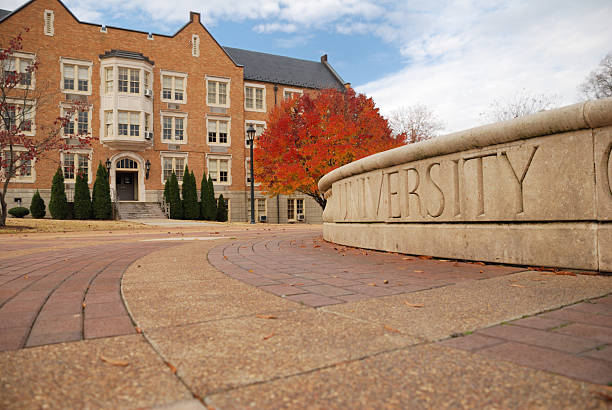Safety among college students
Colleges are home to underage drinking, drugs, and newfound freedoms. This might seem like a dream to some who have lived their lives in the safety of their helicopter parents, but according to studies, college isn’t just all that and a degree. It is also home to assault among students.
Young adults ages 18-24 are at the highest risk of sexual assault cases in the United States making up 54 percent of all cases. Undergraduates living on college campuses full-time are also more susceptible to sexual assault than to those who are living off-campus at the time stated a recent study done by the University of South Carolina.
Currently, enrolled students themselves are starting to take notice to the effects that college safety has on students. College sophomore Jacob Fox has admitted to feeling the large shifts in characters among his peers when it comes to the safety of the campuses.
“I have noticed that more of my friends have started walking in groups at night and carrying around stuff like pepper spray and tasers to protect themselves from any threats,” he said. “I think that they are afraid of what guys might do to them if they saw them walking around by themselves in the middle of the night.”
It is no secret that college-aged persons, students or not, are more susceptible to sexual assault. With 13 percent of all students experiencing some sort of sexual violence or assault in their college careers, there is no doubt that something has to change. Senior Bre Denney comments on how the rise in cases has made her rethink some of her college choices.
“My first college choice was Purdue, but when I started talking to people who went there and looking at the stats, I saw that it wasn’t very safe,” said Denney. “It made me change my mind and start looking for different schools.”
Denney isn’t the only one who feels this way either. Many students are starting to look more into the safety and security of future college campuses. Administration members are also looking at the numbers.
Colleges are starting to put in place different programs and help centers to try and combat this growing problem.
“My school has recently started using a blue light system to help contact the on-campus police whenever someone feels unsafe,” said Fox. “I’ve never had to use it myself, but I know that some people think that it is a good idea and that it helps.”
Although upcoming students don’t feel the same way, “I feel like I would be too scared to push the button honestly,” stated Denney. “I would feel bad if it was like a random person who really wasn’t trying to do anything wrong and I got them in trouble.”
Even with the blue light system colleges are still facing the heat of students and parents over the incline in assault cases.
“I feel like college admins need to do a better job of actually listening to the students and hearing things from their point of view rather than just going by a book,” said Fox, “A lot of people I know who have experienced this kind of assault don’t want to report it because they feel like the story will somehow get twisted and they will get in trouble.”
Women living on campus are also less likely to report and assault cases than those who aren’t in college or living on campus.
Still, only 32 percent of noncollege students are willing to report incidents to the authorities. 9 percent of college women ages 18-24 believe that the police and administration would do nothing to solve it while 12 percent believe that their case is not important enough to report in the first place.
Reporting incident such as these and proceeding to pursuing legal action has proven to be a long and grueling process for most justice seekers. Many attackers are given the “benefit of the doubt” and are let off with warnings if it is the defendants first offense or if the attacker is a very prominent student.
In a study done by The American Association of Women’s 2016 analysis of the clery act reported that 89 percent of 11,000 schools did not disclose any rape statistics among the students. These reports reveal that the administration doesn’t always protect the victim or punish the attacker properly.
Balancing school work along with these lengthy legal actions is also a deterrent for most who have been faced with the hardships of sexual assault.
Men are also less likely to report cases to authorities. Many believe that male students don’t wish to take any legal action routes because they feel the societal pressures that come from the stigma surrounding men being vulnerable and weak.
“I think that it would be harder for a guy to say anything about him being sexually assaulted,” said Fox. “He would probably end up getting teased by all of his friends and other students.”
Social circles can also play a role in whether or not that case is reported. Most sexual assault cases are committed by someone the victim knows while only 19.5 percent of all cases have the attacker as a stranger. When you throw friends into the mix, it can be hard to accuse someone of sexual assault and cause your peers to “pick sides.”
Students and administration alike realize that something must be done to make students feel safer on their own campuses and make them feel like they have a voice and a way to pursue legal action.
Campus law enforcement plays a big role in addressing and responding to sexual assault cases within campuses. According to the Bureau of Justice Statistics and Campus Law Enforcement, 86 percent of sworn campus law enforcement has a staff member dedicated to rape prevention programming. 70 percent of campus law enforcement agencies also have memorandums of understanding (MOU’s) with local law enforcement.
“I know that the campus police are doing stuff to help,” said Fox. “But I don’t think it’s enough.”
Despite the 10 percent increase in employment of armed officers on college campuses, college administrations are still saying they are having a hard time finding proficiently trained officers to hire.
Getting help is also a point of concern for most victims. With only 1 in 5 female victims of sexual assault receiving assistance from victim service agencies, many people think that offering free and helpful resources to students that were victims of sexual assault would make it so students feel more inclined to report and share their stories rather than keep it hidden.
“If I was ever put in that position I want to say that I would report it,” said Denney. “But I know that I would probably wouldn’t report it because I don’t want people to pity me or turn it around and make it seem like I’m the one to blame.”
But with only 20% of women on college campuses reporting incidents, it leaves room

for improvement on all fronts.
“We all need to be able to feel safe,” said Fox. “With the amount of money that we are all paying, I think the least that we can ask for is safety.”
It’s also not just women who are prone to assault. In a recent study performed by the
National Crime Victimization Survey (NCVS), men aged from 18-24 are 78 percent more likely to be victims of sexual assault or rape than those who are not in college or a college setting. In the same study, it stated that members of the TGQN (transgender, genderqueer, and nonconforming) college students are also at risk of sexual assault with 23.1 percent of TGQN students admitting to being sexually as
saulted at some point in college. This had led to a rise in incoming student fears as well.
“I honestly feel like no one is safe,” said Denney. “The more I think about it the more I don’t get why we pay all this money just to have stuff like this happen to us.”
Victims of sexual assault don’t just deal with the physical repercussions either, there are lots of underlying issues that arise when sexual assault incidents occur. Many people develop depression, anxiety, post traumatic stress disorder, and many forms of eating disorders. This can
have impacts on a students self esteem and self image that they perceive themselves with. It can cause a survivors social skills to be cut off and thrown away causing them to spiral into an even deeper depression.
“I had a friend who was sexually assaulted at the beginning of our freshman year and no one knew what had happened,” said Fox. “She just stopped talking to everyone and eventually lost all of her friends.”
Stories like these are the new normal for most sexual assault victims now. Finding help
can be scary and most survivors see it is a tarnish on their records, but more and more people are starting to reach out and provide help services and support for those who need it.
“It’s nice to see people come together and help each other,” said Denney. “I like that there are more resources out there now than there were like 5 years ago.”
With more light being shown on the issues of sexual assault comes the increase in off-campus resources. Organizations like RAINN and the National Sexual Assault Hotline are aiming to raise awareness for these victims and give them free support and guidance.
“I like how in this time people are more willing to believe the victims,” said Fox. “People are more willing to try and help rather than just like run away from the problems that society faces.”

Heather Wolfe is a Senior and staff reporter here at Carroll Highschool. This is her first year with the Charger Online and is excited for all of the experiences...





